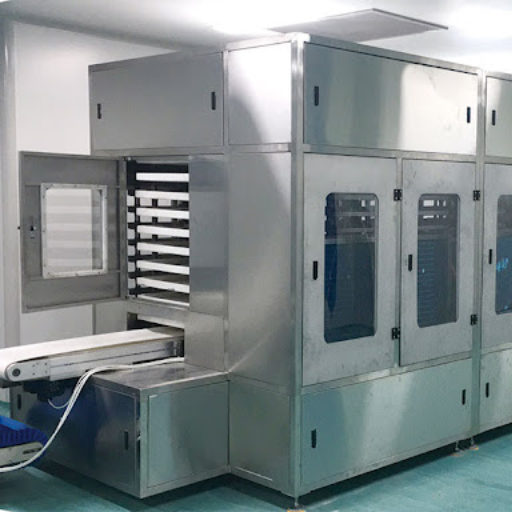Although traditional ways can be time-consuming and inconvenient, microwave sterilizers provide a fast, handy, and efficient alternative. This manual aims to provide you with a complete guideline on how to use a microwave sterilizer effectively. We shall go from how to select the suitable sterilizer to knowing each step of sterilizing as we give you all the necessary basics.
Why Should You Sterilize Using a Microwave Sterilizer?

Image source: http://pharma-equips.com/
Microwave sterilizers are a fantastic pick because they work effectively and are easy to use. With just a few minutes of microwaving, you will eliminate up to 99.9% of bacteria, providing a safe and clean environment.
What Are the Benefits of Using a Microwave Steam Sterilizer?
Microwave steam sterilizers are popular with parents for many reasons. To begin with, they are time-saving and need about 2-8 minutes to sterilize objects compared to the traditional ways of doing things. Secondly, this product is simple to operate; you only have to put water inside, load your things, and place them inside the microwave. Thirdly, microwave steam sterilizers are highly effective as they eliminate up to 99.9% of harmful bacteria and germs. Moreover, they can hold multiple items simultaneously, making them more convenient than other types of sterilizers. Also, chemicals are not included during the process; thus, after being cleaned, they remain safe from toxic remains that would harm them in future use.
Can Microwave Sterilization Reduce Germ Exposure?
Microwave sterilization is known for reducing the germs people are exposed to. Steam microwave sterilizers, among the most trusted sources of information, can remove a staggering 99.9% of harmful bacteria and viruses. Steam produces high temperatures that kill all insects without needing any chemicals, thus making it safe and effective. Furthermore, a rapid sterilization period, usually lasting just a few minutes, guarantees cleanliness and ready for use within a short period, hence avoiding infection risk and exposure to germs.
Is It Safe to Sterilize BPA-Free Items in the Microwave Sterilizer?
BPA-free products can be sterilized in a microwave sterilizer. BPA-free plastics are formulated to withstand the heat generated in microwave sterilization. Microwave steam sterilizers are exclusively manufactured to accommodate such materials without damaging them or releasing harmful contents. Always verify from the manufacturer’s manual whether the particular item can be microwaved.
How Does a Microwave Steam Sterilizer Work?
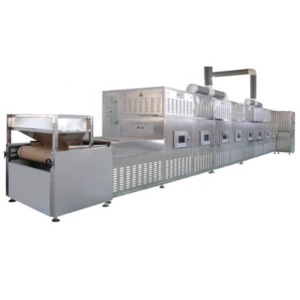
A microwave steam sterilizer operates by using microwaves to change water into vapor. When trapped inside the sterilizer, this steam attains very high temperatures that eliminate bacteria and viruses. Frequently, only a tiny amount of water is needed, and the procedure takes several moments. Firstly, pour the appropriate volume of water into the base of your sterilizer, insert your items, and microwave according to the manufacturer’s guidelines. The products are entirely sterile because they use steam without any chemicals, implying safety and hygiene established before their use.
What Is the Science Behind Steam Sterilization?
The high pressure at which steam is released in the autoclave causes it to attain a very high temperature that can kill living microorganisms. The heat of the gas and its moisture content coagulates the proteins in bacteria, viruses, etc., resulting in their death. The process routinely occurs at temperatures above 121°C (250°F), thus ensuring that resistant spores are killed. Aside from reaching complex surfaces, due to its properties of both wetness and warmth, it provides all-inclusive disinfection for hard-to-reach places during conventional cleaning procedures. This method is widely known for its efficiency, reliability, and ability to sterilize without using harsh chemicals.
Can a Microwave Sterilizer Remove 99.9% of Bacteria?
Yes, a microwave steam sterilizer is quite effective in eliminating 99.9% bacteria and harmful germs such as viruses and heat-resistant spores. This has been backed by different studies and upheld by significant health organizations worldwide, making it very common among mothers. Through denaturation of bacterial proteins and killing off pathogens such as common bacteria, viruses, and even heat-resistant spores, high-temperature steam produced within the microwave sterilizer effectively sanitizes. Following the manufacturer’s guidelines concerning the amount of water to use and microwave settings for complete sterilization is essential.
Common Issues When Using a Microwave Sterilization?
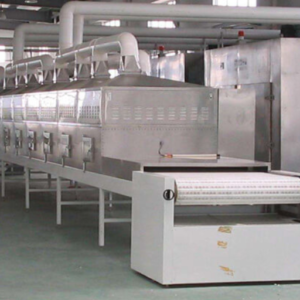
Microwave sterilization suffers from uneven heating, which can cause non-sterilization if steam does not reach every part of the items. Moreover, failure to follow the recommended water quantity and microwave settings exactly can lead to low steam generation, hence making the process ineffective. Overfilling the sterilizer is also a problem because it may hinder the complete circulation of steam around it. Finally, some plastics and other substances might not be safe for use in microwaves, and they can get damaged or produce toxic fumes when overheated.
Does Microwave Sterilization Cause Item Damage?
Microwave sterilization is generally safe and effective but can destroy some of them. When microwaved, products not made for heating at high temperatures, especially certain plastics, might deform or even release dangerous toxic substances. In addition, these products are not appropriate for microwave sterilization; they may cause sparks and ruin the appliance and a household item containing elements made of metal or decorations with a metallic coat or coating. For prevention purposes, always ensure that items to be sterilized are marked as microwave-safe and that water levels and microwave settings are observed as stipulated by the maker. It is also advised that you regularly inspect objects for any signs of wear and tear that could compromise safety or efficacy.
What Happens if Insufficient Water is Used in the Microwave Steam Sterilizer?
Numerous serious problems can arise if the microwave steam sterilizers use inadequate water. For incomplete sterilization and unsafe items, if there is not enough water, the sterilizer will not be able to generate enough steam. Moreover, occurrences with minimal steam may make the machine overheat, thus damaging both itself and the staff inside it. If there is too little water in it, hot spots and uneven heating may occur, which would mean that the sterility of some objects remains questionable due to this occurrence. To achieve effective and safe sterilization, always ensure you put in the recommended amount of water according to the manufacturer’s guidelines.
Which Items Can Be Sterilized Using a Microwave Sterilizer?
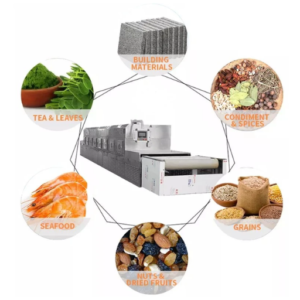
Different items made of microwave-safe material can be sterilized using microwave sterilizers. In addition, a number of connectors can also be sterilized efficiently with a microwave if they are labeled as microwave-safe. Always check with each manufacturer for specific instructions on how to sterilize safely.
Is It Possible to Sterilize Pump Parts?
Yes, it is possible to use a microwave steam sterilizer to clean parts if they are made from materials suitable for microwaves. However, this might bring about destruction when it is misused to handle different portions of the product according to the manufacturers’ guidelines. Each part should be cleaned well before any form of sterilization, and a sufficient amount of water must be added before using the sterilizer to achieve maximum results without overheating. Whenever you want to heat them in the oven, ensure that they are compatible with its heating mode because otherwise, they won’t work correctly and may even cause damage, but when they’re right, all’s fine.
Are Dishwasher-Safe Items Suitable for Microwave Sterilization?
However, it is essential to ascertain that all the items are dishwasher-safe and microwave-using materials that can withstand the heat generated by a microwave. However, it is advisable to check product instructions for each item to confirm they’re being labeled as suitable for microwaving. Some products labeled as dishwasher-safe may not be able to tolerate steam sterilization in a microwave because they may have parts that could get damaged or become dangerous when exposed to high temperatures of steam that emanate from a microwave. The rule of thumb is that things made from glass, suitable plastics, and certain metals might be compatible with the dishwasher and microwave sterilization; however, it’s better to consult explicit instructions.
Tips for Effective Use of Philips Avent Microwave Steam Sterilizer
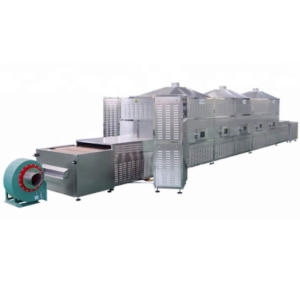
Ensuring Proper Cleaning Before Sterilization
Each part of the Philips Avent Microwave Steam Sterilizer must be cleaned before putting them in place. The sterilization process can be affected by remaining or deposits. It is essential to wash every piece with mild soap and warm water and rinse thoroughly.
Assembling and Loading Correctly
Ensure all sterilizer parts are correctly assembled and loaded as described by the manufacturer. Misplacement or use of too many items inside may prevent steam from flowing well enough to sterilize.
Using the Correct Amount of Water
Always fill the base with the recommended quantity of water. More or less water could affect steam generation, which might damage either component(s) or even cause the sterilizer to malfunction.
Regular Maintenance
When finished, drain any remaining water and allow it to cool completely. Wipe out limescale formation on interior and exterior surfaces so that bacteria does not accumulate. Replace parts where necessary due to wear and tear.
Following Manufacturer’s Instructions
The microwave steam sterilizer use instructions by Philips Avent should always be observed like this for effectiveness in its work, long life span, and protective measures for what has been put into it. Always consult your model’s user manual for specific guidelines applicable to your case.
How to Properly Load the Steam Sterilizer?
For proper steam sterilizer loading, the following steps should be followed:
- Teardown Accessories: Disassemble all other accessories into separate components.
- Place Items Properly: Position the components inside the sterilizer, with the open end facing downward. This permits steam to penetrate sufficiently.
- Do Not Overcrowd it: Make sure there is enough space between them so that steam can freely move around them. Excess items may hinder proper sanitization.
- Add Other Smaller Items: Put more minor things in their designated slots or trays in the sterilizer.
-
Go through the Manufacturer’s Guidelines: Always check the sterilizer user manual for specific loading recommendations and tips. This will ensure optimal performance.
How Long Does the Sterilization Process Take in the Microwave Sterilizer?
The sterilization process usually takes around two minutes at 1200-1850W, four minutes at 850-1100W and six minutes at 500-800W in Philips Avent Microwave Steam Sterilizer. Always refer to the manufacturer’s instructions for precise timing according to your microwave’s wattage.
Can You Sterilize Microwave Sterilizer Bags?
These bags are meant for convenience, and if used as directed, they can help prevent 99.9% of harmful bacteria. Using a microwave sterilizer bag involves adding the amount of water indicated, putting in the objects, and sealing the bag before microwaving for the desired time period. Nevertheless, one must always read usage guidelines from manufacturers.
Comparing Microwave Sterilizers with Other Sterilization Methods

Unlike other sterilizing methods, such as electric steam sterilizers and boiling and cold water sterilization, microwave sterilizers have several factors to consider. They are known for being fast and convenient, and the sterilization process only takes a few minutes.
Electric steam sterilisers,on the other hand, are also effective but take more time to cycle and often require more space. However, they are capable of handling many items at once, making them convenient for bigger families.
Boiling is an age-old method that does not require any specialized equipment, so it is inexpensive. Nonetheless, boiling could be time-consuming, leading to burns and harm to objects if unattended.
Cold-water sterilization usually involves adding a tablet or solution to water. This technique may take longer than others but is suitable for heat-sensitive appliances since residual taste or odor might be left on baby feeding equipment.
In conclusion, microwave sterilizers offer a quick, effective way to sanitize bottles, which makes many busy parents choose them over other types.
How Does Microwave Sterilization Compare to Boiling?
There are key differences between boiling and microwave sterilization. Microwave sterilization is very fast, taking only a few minutes to effectively sterilize other accessories. In this method, steam is produced by microwaving water, which makes it efficient in terms of time and energy.
On the flip side, boiling is a more traditional method that calls for immersing things in boiling water for at least ten minutes to ensure thorough sterility. Boiling can be time-consuming, though practical, and does not require special apparatus. At the same time, if unattended, it could be unsafe due to safety risks that may arise. Higher temperatures can damage fragile items or cause burns if not handled carefully.
Overall, both methods work well when sterilizing products; however, the microwave stands out because of its swiftness, comfort, and simplicity of use, making it a favorable choice.
Are Microwave Steam Sterilizers More Effective Than UV Sterilizers?
Microwave steam sterilizers and UV sterilizers are both effective. They may be applicable in some contexts but not others. Microwave steam sterilizers have the advantage of speed and simplicity, as they use water heated in a microwave to produce the steam used to disinfect items within a few minutes. This method is highly effective against many bacteria and viruses, and therefore, it is commonly used.
On the contrary, ultraviolet light destroys the DNA of microorganisms, preventing them from reproducing. Hence, UV could be used to eradicate bacteria, viruses, molds, spores, and any other microbe that has DNA. It’s also dry, so it doesn’t need water, for instance, when electronics need to be sterilized, or water-proof items are being sterilized. But UV usually takes longer than microwave, so its technique costs more.
In short, however, microwave steam sterilizers offer quick and efficient sterilization, making them ideal for everyday use; on the other hand, UV, if employed, will cover a broader range of pathogens and can be applied to various things. The decision between these alternatives depends mainly on personal taste, the amount of money one has at his/her disposal, and what needs one looks forward to during the process of cleaning equipment or, instead, any other applications that require these machines for home usage.
Can Microwave Sterilizers Be Better Than Traditional Steam Sterilization Methods?
Sometimes, microwave sterilizers may be more advantageous than steam sterilization methods for many reasons. They can sterilize important items by heating water in the microwave to produce steam within a few minutes. This method is usually user-friendly and does not demand a lot of work in terms of setting up or cleaning.
Some traditional steam sterilization methods, such as electric steam sterilizers, tend to take longer and require further maintenance, such as descaling to remove limescale build-up. Nonetheless, these two methods do well in killing a broad range of bacteria and viruses, thus making them reliable in disinfecting baby stuff.
In summary, when compared to conventional steam sterilization methods, microwaves provide quicker, more accessible options; hence, they are very tempting, especially for busy parents. However, the decision depends on individual demands, ease of use, and specific treatment requirements.
Frequently Asked Questions (FAQs)
Q: What is a microwave sterilizer, and how does it work?
A: A microwave sterilizer, also known as a microwave steam sterilizer, is a device used to sterilize accessories using steam from water and the heat generated by a microwave oven. The microwave heats the water to produce steam, effectively killing 99.9% of harmful bacteria and germs on sterilized items.
Q: How often should I use a microwave steam sterilizer?
A: It is recommended that you use the microwave steam sterilizer every time you need to sterilize. Regular sterilization helps maintain hygiene and protects you from potential infections.
Q: Can I sterilize other items in a microwave steam sterilizer?
A: Yes, a microwave steam sterilizer can sterilize various accessories. Always check the manufacturer’s guidelines to ensure the items are safe to use with the sterilizer.
Q: How long does the sterilization process take with a microwave sterilizer?
A: The typical sterilization process using a microwave sterilizer takes about 2 to 8 minutes, depending on the wattage of your microwave and the specific model of the sterilizer.
Q: Is it safe to use a steam sterilizer on glass bottles?
A: Yes, using a steam sterilizer on glass bottles is generally safe. However, it is essential to check the manufacturer’s guidelines for the glass bottles and the sterilizer to ensure compatibility.
Q: What is the difference between a microwave steam sterilizer and an electric sterilizer?
A: A microwave steam sterilizer uses the heat generated from a microwave to produce steam and sterilize items, whereas an electric sterilizer uses a built-in heating element to generate steam independently. Both devices achieve the same result, killing 99.9% of bacteria and germs.
Q: Can I purchase a microwave sterilizer online?
A: Yes, you can purchase a microwave sterilizer from various online retailers, including Amazon.com. Read reviews and check the product specifications to choose the best sterilization solution for your needs.
Q: How should I clean my microwave steam sterilizer?
A: After each usage, allow the sterilizer to cool down and then wash it with warm, soapy water or follow the manufacturer’s cleaning instructions. Regular maintenance ensures the sterilizer’s longevity and effectiveness.
Q: Do I need special water for the microwave steam sterilizer?
A: Tap water is usually recommended, but you may use distilled water to reduce mineral build-up in the sterilizer. Always refer to the sterilizer manufacturer’s instructions for specific water recommendations.
Q: Will using a microwave sterilizer damage my microwave?
A: A microwave sterilizer should not damage your microwave when used correctly according to the manufacturer’s instructions. Always follow the guidelines for water levels, proper placement, and timing to ensure safe and efficient usage.













